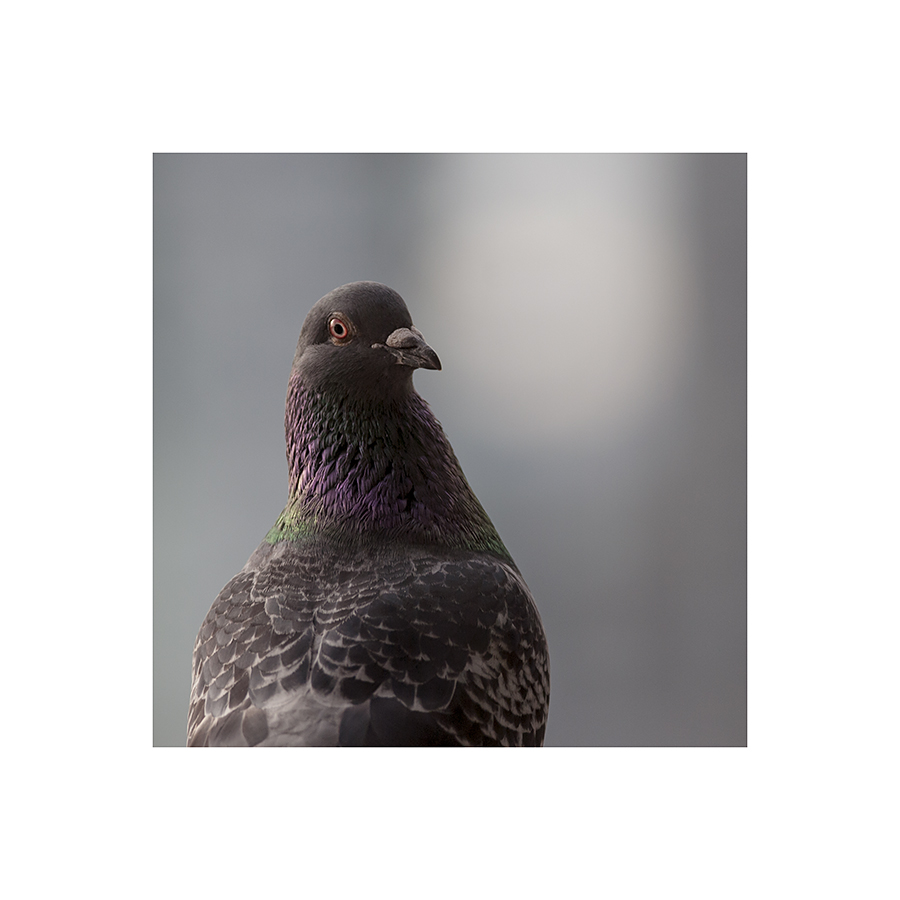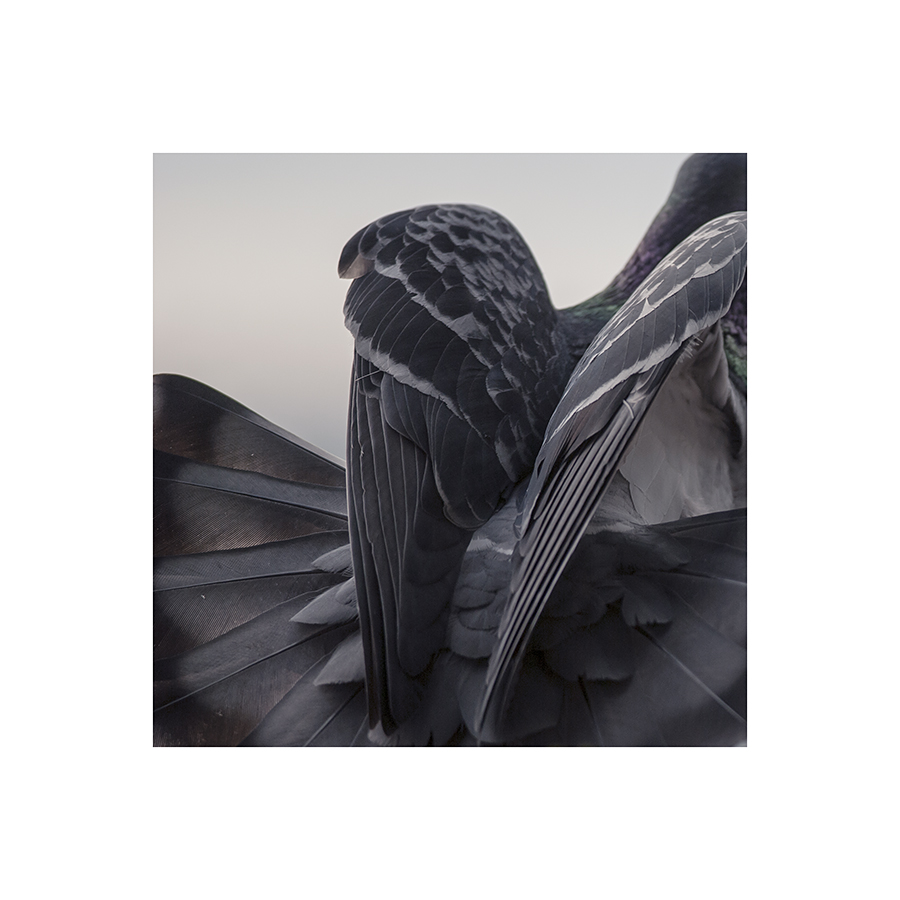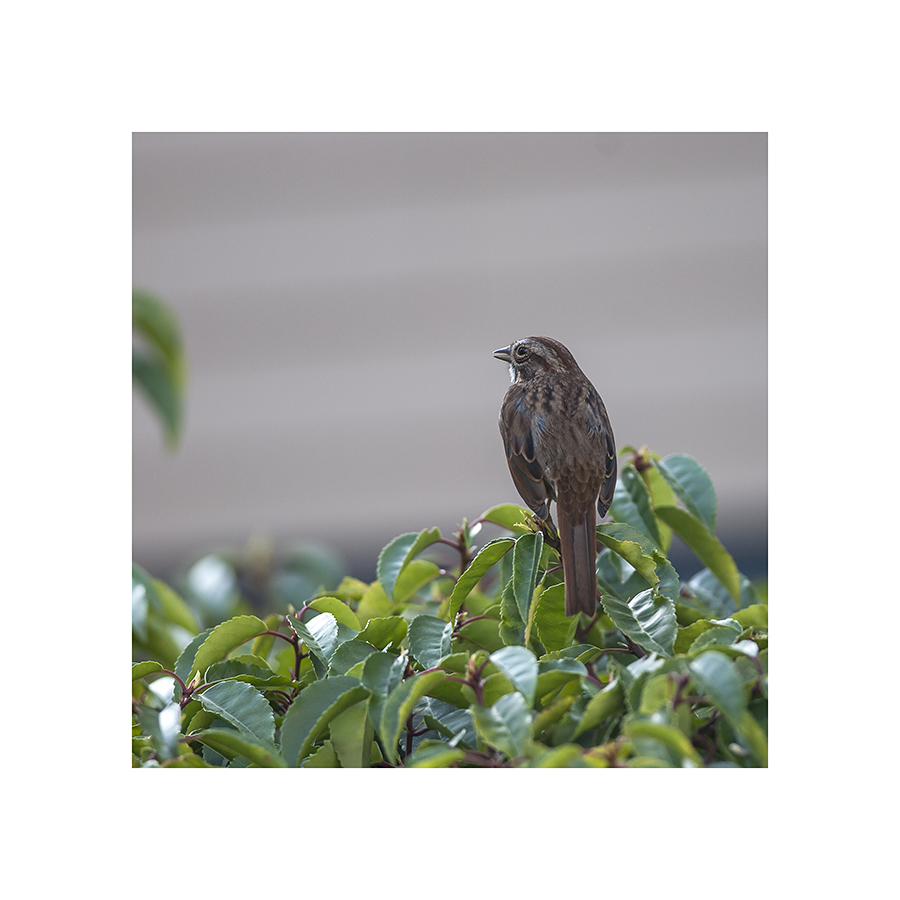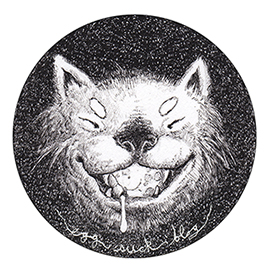I think I need a new birding strategy. Although I’ve been faithfully birding the neighbourhood all year, I’ve only added three new species to my list: two eagles and a hummingbird. Oh, and a cormorant. That’s four. Over on the bird forum, someone did a poll on how many species people were racking up per day, and most claimed between fifty and a hundred. Granted, the majority of respondents were Brits; I’ve a feeling it’s easier to hit those numbers on the other side of the pond. But even amongst the North Americans, my numbers were the worst, at five to ten. Today, for example, I saw starlings, Canada geese, crows, two kinds of gull, a great blue heron, two pigeons, a hummingbird (the same wee Anna’s that’s always here), and a song sparrow — so, nine species. Of these, I was able to photograph only the pigeons. Well, I could’ve snapped the crows and gulls, but I’ve got loads of them, already. The heron was off on the other side of the water, and the starlings were down in the garden, out of range.
I was especially disappointed with today’s results, because I walked farther than usual, in search of new suspects for the lineup. Every time I heard an unfamiliar squawk or peep, I followed it, only to lose it again. Should I spend more time sitting in one place, hoping the birds will come to me? Would it work better if I wore a black coat, instead of a red one? I know there are birds in this area which I haven’t seen. For example, when I lived on the other side of the water, there was a tree outside my window, and it was always full of these tiny blue and yellow things, with black stripes — surely, they can’t have been limited to that one tree. And there’s that black-headed jobbie with the yellow beak, which is constantly eluding me in the garden across the road. And once, ages and ages ago, I’d have sworn I saw a black swift. Where’s all that lot, when I want them?
Maybe I should start wearing my specs, when I’m birding. But every time I do that, my camera grinds them into my face. I could alternate between specs and camera: half the time, I’d be able to spot the birds, but not record them, or zoom in for a closer look; the other half, it’d be reversed. That’s a silly plan, isn’t it? I wish I could afford a birding scope. Or a toothless cat (y’know, so it could catch birds and bring them to me for inspection, but it wouldn’t be able to chew them up). Just kidding about the cat.
Yesterday, I was out walking, with neither specs nor camera, and I saw a GREAT, HORRIBLE, SLAVERING ALSATIAN running loose, with its lead trailing behind it. Clearly, it had broken free of its owner, and was out to wreak havoc and bite people. I shuffled off as fast as I could. (Though, my companion on said walk had another interpretation of the situation: it was a cute, chunky German Shepherd puppy, with a ball in its mouth, playing in the garden. But I swear I saw the hellhound! Horrid beast!) I also saw a pit bull, two Pomeranians, and two white Scotties, all properly restrained. These, I did not flee. This is a very doggy neighbourhood. If I were a dogwatcher, rather than a birdwatcher, every day could be a red-letter day.
Now, here are some pigeons:

There’s something mucky-looking about that plumage–something so dowdy it looks discoloured, even when squeaky-clean. Just look at that oil-slick neck, those mouldy-peach eyes! And that cere! — it looks like a patch of bird lime, right above the beak! Nasty.

I can’t think of a single bird that would look ugly from this angle…except this one!
How is it that pigeons always look grubby, no matter what?



